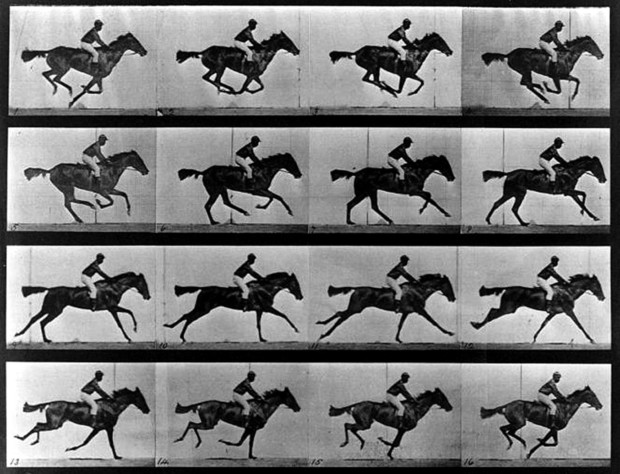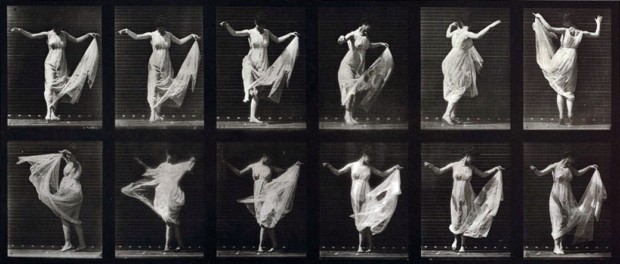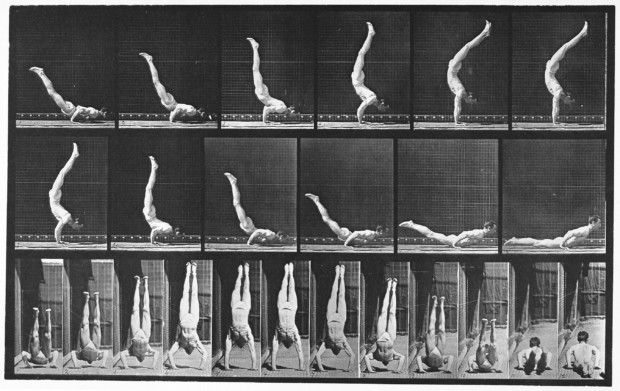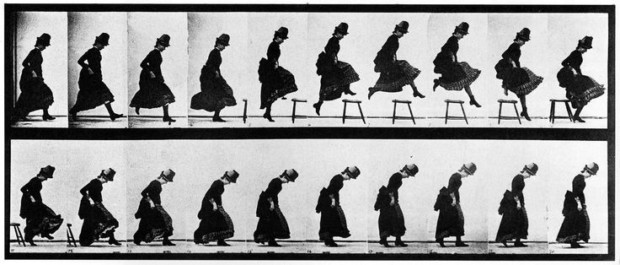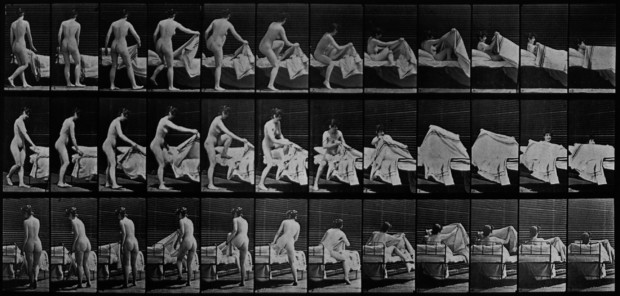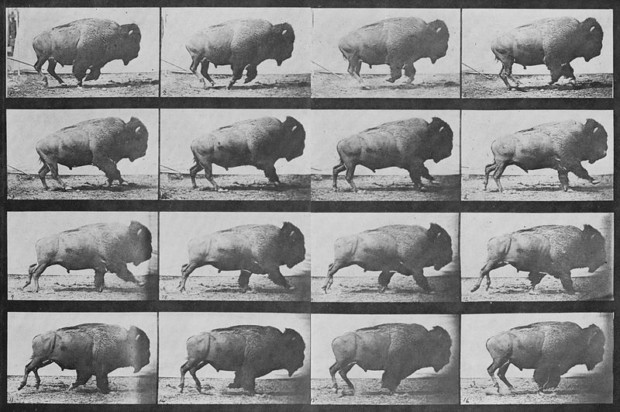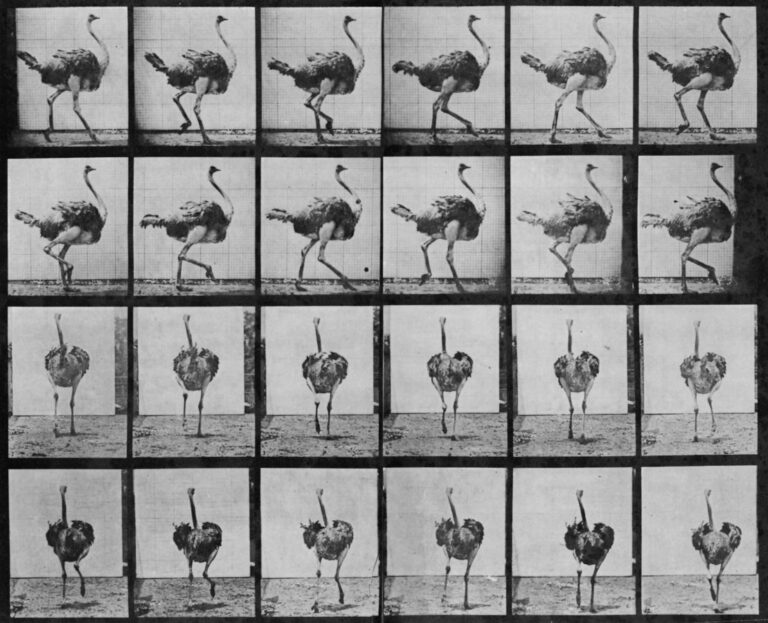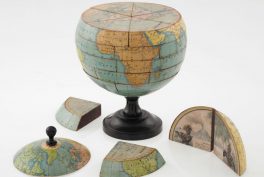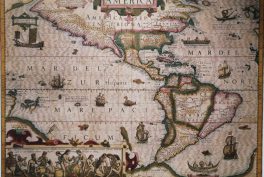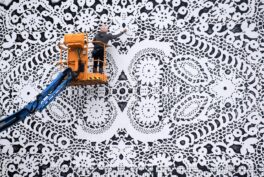Eadweard Muybridge was a 19th-century photographer who proved that horses can fly. Today, he is recognized for his pioneering work on animal locomotion, in which he used multiple cameras to capture different positions during the movement. He also constructed zoopraxiscope, a device for projecting motion pictures that pre-dated the flexible perforated film strip used in cinematography.
Eadweard Muybridge took first photographs of the horses in motion in 1872. The first motion sequence photographs were taken in the year of 1878 when a millionaire Leland Stanford asked him to investigate animal locomotion as a phenomenon in itself. Muybridge set up a battery of 12 cameras at Palo Alto and developed a set of electro-shutters and timers.
In the 1880s, Eadweard Muybridge begun to work for University of Pennsylvania in Philadelphia and produced over 100,000 images of animals in motion, capturing what the human eye could not distinguish as separate movements — this is how he proved that horses can fly.
Having looked at how animals moved, Muybridge started to photograph humans. On March the 4th, 1879, he became the first to photograph the human figure in motion. However, he didn’t focus on the human body until his contract at Pennsylvania University began in May 1884. This resulted in two volumes of work dedicated to photographs of human subjects.
Here they are – some of the Muybridge’s most famous photographs. Enjoy!
